
Erythranthe androsacea is a species of monkeyflower known by the common name rockjasmine monkeyflower. It was formerly known as Mimulus androsaceus.

Diplacus bigelovii is a species of monkeyflower known by the common name Bigelow's monkeyflower. It is native to the southwestern United States, where it grows in desert and slope habitats. It was formerly known as Mimulus bigelovii.
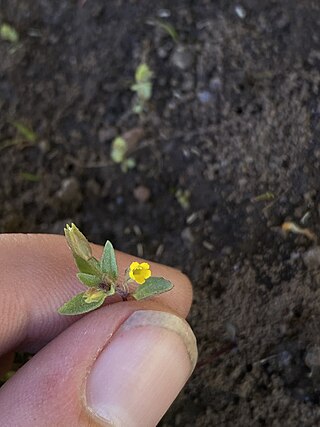
Erythranthe breviflora is a species of monkeyflower known by the common name shortflower monkeyflower. It is native to western North America from British Columbia to Wyoming to the Modoc Plateau and northern Sierra Nevada in California. It grows in moist areas in several types of habitat. It was formerly known as Mimulus breviflorus.
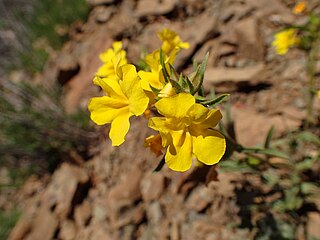
Diplacus brevipes is a species of monkeyflower known by the common name widethroat yellow monkeyflower. It was formerly known as Mimulus brevipes.
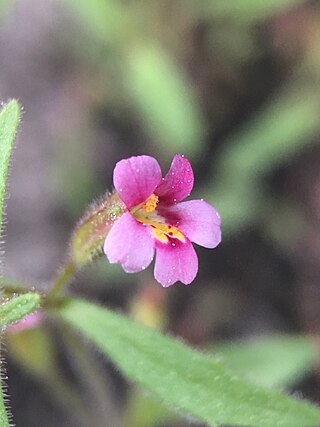
Erythranthe breweri is a species of monkeyflower known by the common name Brewer's monkeyflower. It is native to western North America from British Columbia to California to Colorado, where it grows in moist spots in several habitat types. This is a hairy annual herb producing a thin, erect stem up to 21 centimeters tall. The herbage is reddish green in color. The paired opposite leaves are linear in shape and up to 3.5 centimeters long. The plant bears small tubular flowers, each with its base encapsulated in a lightly hairy calyx of sepals with tiny equal lobes at its mouth. The five-lobed flower corolla is just a few millimeters long and light purplish pink in color, often with darker spots in the throat. It was formerly known as Mimulus breweri.

Erythranthe exigua is a rare species of monkeyflower known by the common name San Bernardino Mountains monkeyflower. It was formerly known as Mimulus exiguus.

Erythranthe filicaulis, known by the common name slender-stemmed monkeyflower, is a species of monkeyflower. It was formerly known as Mimulus filicaulis.
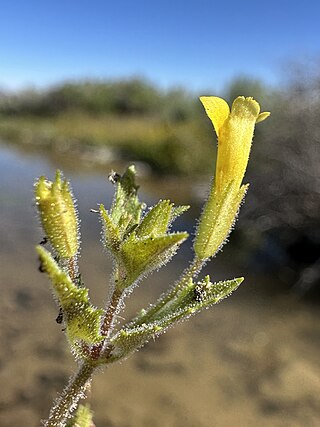
Erythranthe floribunda is a species of monkeyflower known by the common name many-flowered monkeyflower. It is native to western North America from western Canada to California and northern Mexico, to the Rocky Mountains. It grows in many types of habitat, especially moist areas. It was formerly known as Mimulus floribundus.

Diplacus fremontii is a species of monkeyflower known by the common name Frémont's monkeyflower. It is native to California and Baja California, where it grows in mountain and desert habitat, especially moist or disturbed areas. It was formerly known as Mimulus fremontii.
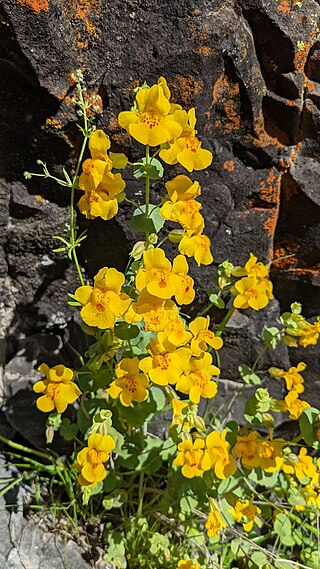
Erythranthe glaucescens is a species of monkeyflower known by the common name shieldbract monkeyflower. It was formerly known as Mimulus glaucescens.
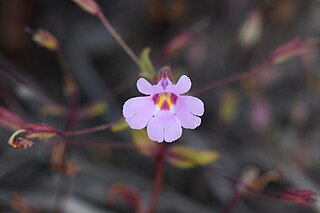
Erythranthe gracilipes is an uncommon species of monkeyflower known by the common name slenderstalk monkeyflower. It was formerly known as Mimulus gracilipes.

Diplacus nanus is a species of monkeyflower known by the common name dwarf purple monkeyflower. It is native to California and the Northwestern United States to Montana. It grows in moist habitat, often in bare or disturbed soils. It was formerly known as Mimulus nanus.
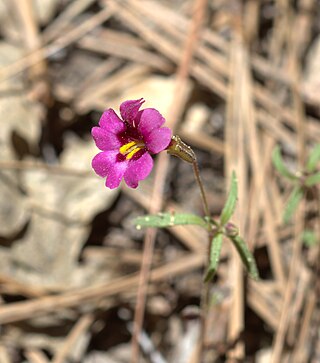
Erythranthe palmeri is a species of monkeyflower known by the common name Palmer's monkeyflower. It was formerly known as Mimulus palmeri.
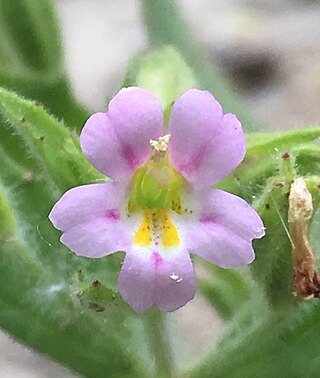
Erythranthe parishii is a species of monkeyflower known by the common name Parish's monkeyflower. It was formerly known as Mimulus parishii.
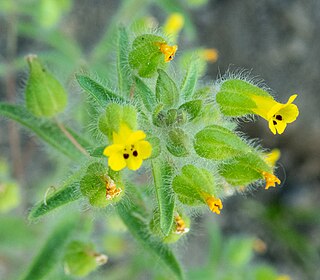
Mimetanthe is a genus of flowering plants in the family Phrymaceae. It has only one species, Mimetanthe pilosa, synonym Mimulus pilosus, known by the common names false monkeyflower and downy mimetanthe. It is native to the western United States and Baja California, where it grows in moist and disturbed habitat types. This plant is different enough from other monkeyflowers that it is treated in its own monotypic genus, Mimetanthe, or it may be retained in Mimulus.
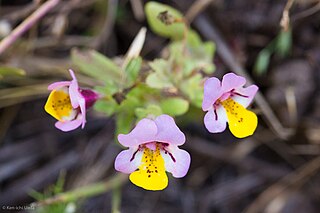
Diplacus pulchellus is an uncommon species of monkeyflower known by the common name yellowlip pansy monkeyflower. It was formerly known as Mimulus pulchellus.
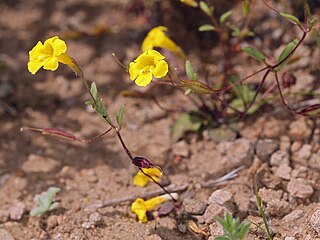
Erythranthe pulsiferae is a species of monkeyflower known by the common names candelabrum monkeyflower and Pulsifer's monkeyflower. It was formerly known as Mimulus pulsiferae. It is native to the western United States from Washington to northern California, where it grows in wet habitat such as streambanks. It is an annual herb growing 2 to 21 centimeters tall. The leaves occur in a basal rosette and oppositely along the stem, each on a short petiole and with an oval blade. The tubular base of the flower is encapsulated in a ribbed calyx of sepals with tiny pointed lobes. The flower is roughly a centimeter long and yellow in color, sometimes with red spotting or pink-tinged white coloration in the mouth.
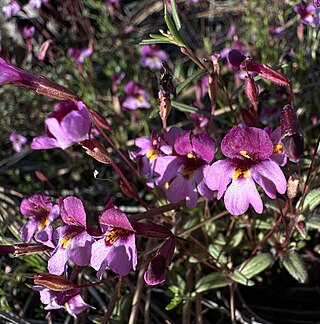
Erythranthe purpurea is a species of monkeyflower known by the common name little purple monkeyflower. It was formerly known as Mimulus purpureus.
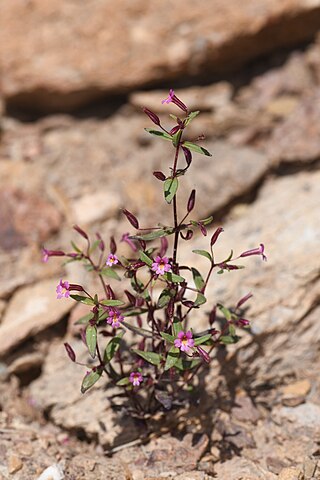
Erythranthe rubella is a species of monkeyflower known by the common name little redstem monkeyflower. It was formerly known as Mimulus rubellus.

Erythranthe tilingii is a species of monkeyflower known by the common name Tiling's monkeyflower. It was formerly known as Mimulus tilingii.




















